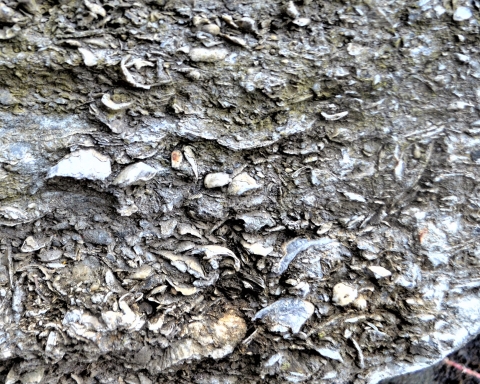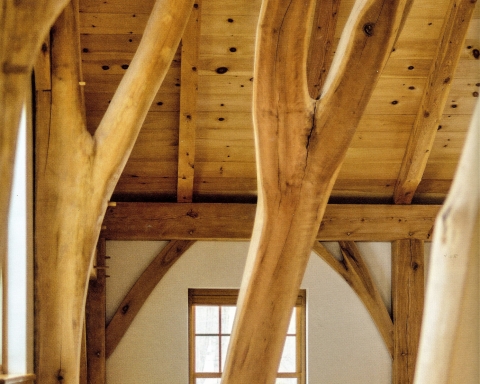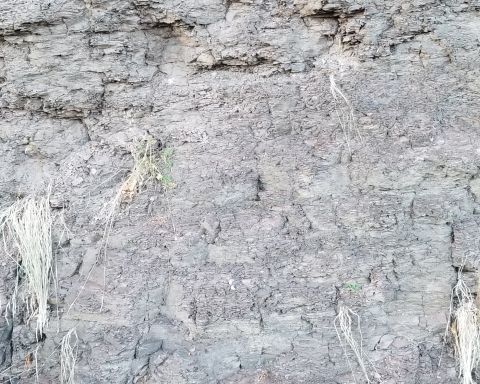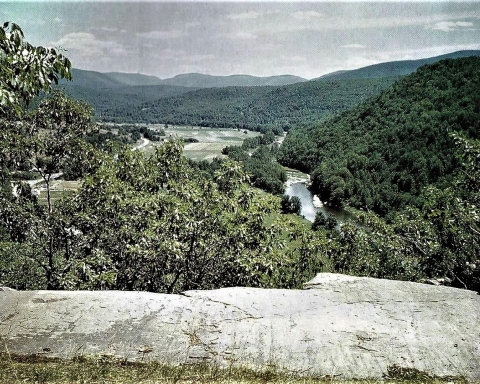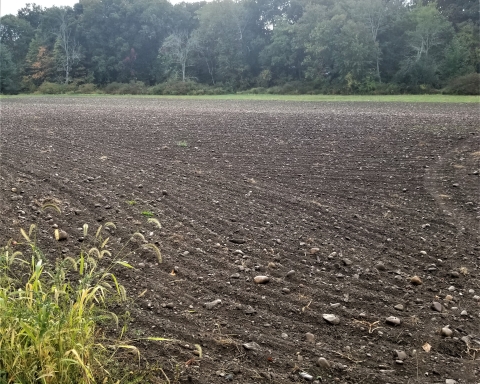Fossil corals of the Catskill Mountains
Robert and Johanna Titus
From chapter 7 of their book The Catskills, A geologic Guide, 4th edition
Corals: Film and still photos of coral reefs portray some of the most vivid and colorful images of today’s seas. Such images are difficult to associate with the Catskills but, as in today’s tropical seas, corals were sometimes quite common in the old Appalachian Basin. While there is nothing in the Catskills that can match the Great Barrier Reef of Australia, there were some fairly decent reefs in those times. Many of the Devonian forms were horn corals (see right figure below; (A) horn coral; B) digitate corals C) honeycomb corals. Courtesy of the New York State Museum) so named because they had skeletons shaped like a cow’s horn, wide and open at one end and curving to a point at the other.
The chamber within was divided into compartments by walls much the way you see in a cut open orange. Other types are called digitate corals (figure 7-2B), that is they grew long slender branches similar to fingers (the digits). A third common group, the honeycomb corals, grew massive honeycomb-like skeletons (figure 7-2C) that are similar to some modern-day corals. Corals are only occasionally found throughout the strata of the Appalachian Basin, but they can sometimes be common in the Onondaga Limestone.
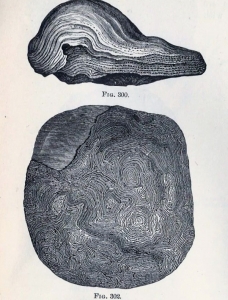
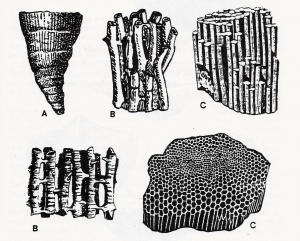
Stromatoporoids: The stromatoporoid is a peculiar fossil (left figure above), intermediate in appearance between sponges and corals. They were colonial- and reef-building animals, much like the corals. But they seem to have been simpler creatures, like the sponges. They appear to be entirely extinct, so we know nothing of their soft anatomy, and we will thus never be exactly sure what they were. They grew abundantly in the very shallow, nearshore environments of the Manlius Limestone and are seen within that unit, especially to the east as at John Boyd Thacher State Park (see Chapter Three). We have seen them in blocks of the Manlius that make up the Bronck homestead in Coxsackie.
Contact the authors at randjtitus@prodigy.net. Join their facebook page “The Catskill Geologist.com.”

